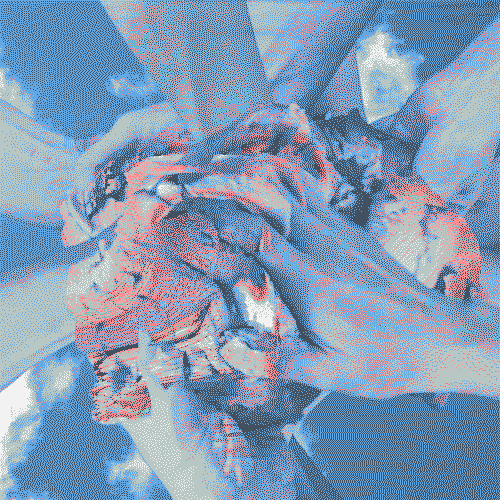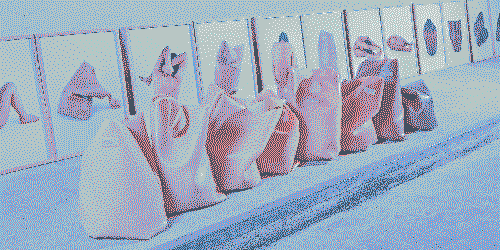Like the Deleuzian idea of diagram – an abstract machine, “the map of relations between force” – dough is “a malleable collection of particles that adhere to and contain each other.”1 It’s almost like what Ursula K. Le Guin called a carrier bag, but just a little bit more leaky, without the impermeable layer bounding the content from outside, but connected through mutual attraction between its constituents. Dough can turn into various flavors, colors, and nutritional values with the addition of different ingredients, and it can be sculpted into any form. In the typical cooking process, dough acts as a chimera where species meet. For example, homemade pasta dough is a mixture of the powdered body of a plant species, commonly known as flour, and the reproductive cells of a bird species, eggs, along with bacterial colonies from the kneader's hands. It is also likely to contain microplastics derived from the fossilized remains of organisms such as zooplankton and algae, thereby extending the dough's history into the geological timescale.
In relation to dough-making, it is important to understand the idea of race as a viscous “chain of contingency” proposed by Arun Saldanha. Race, according to Saldanha, is “sticky connections” between various “constituent components” such as “strands of DNA, phenotypical variation, discursive practices (law, media, science), artifacts such as clothes and food, and the distribution of wealth.”2 He wrote: “Whiteness, for example, is about the sticky connections between property, privilege, and a paler skin. There is no essence of whiteness, but there is a relative fixity that inheres in all the ‘local pulls' of its many elements in flux. Emergence and viscosity are complementary concepts, the first pertaining to the genesis of distinctions, the second to the modality of that genesis.”
This “viscous assemblage of race” is like a very slimy, non-anthropomorphic and posthuman dough that is also not strictly confined in the boundary of human. I think of how the notion of dough-making can facilitate the understanding of race in design beyond “Contextualized artworks to thematize difference rather than engaging in an actual politics”, merely aestheticized through different shades of skin color, from Emojis to tote bags.3



1 Jakub Zdebik, Deleuze and the Diagram: Aesthetic Threads in Visual Organization (London: Bloomsbury Publishing, 2012).
2 Arun Saldanha, "Reontologising Race: The Machinic Geography of Phenotype," Environment and Planning D: Society and Space 24, no. 1 (2006): 9-24.
3 Karen Archey, After Institutions (Floating Opera Press).
💧Membrane
💧Diagramming like a Carrier Bag
💧Diagramming Together
💧Diagramming Porously